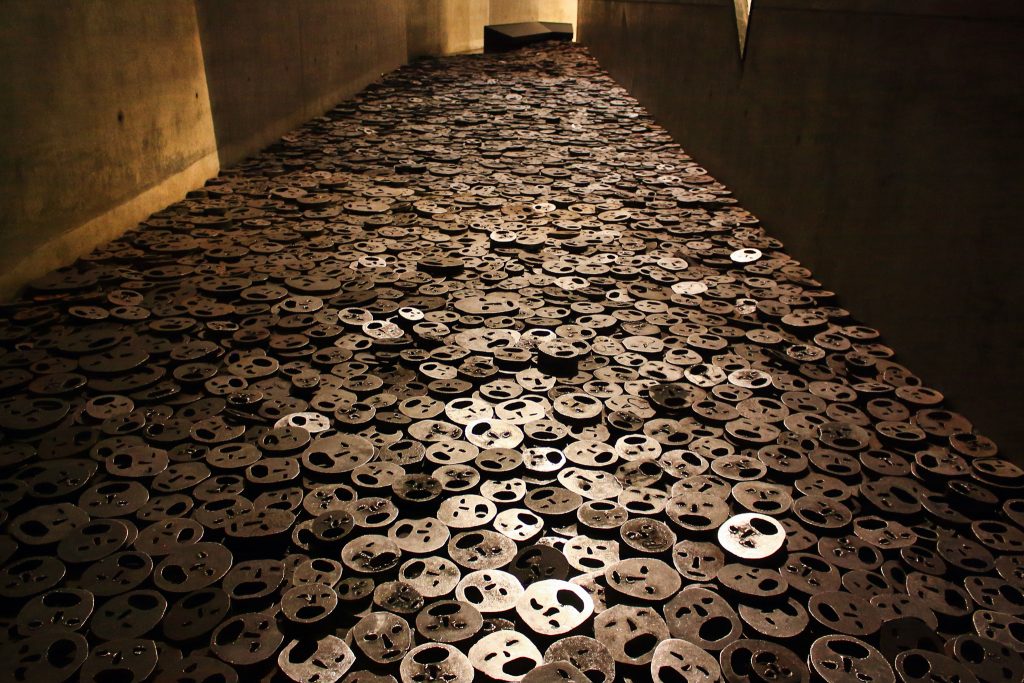In: Shoah

Menashe Kadisman | Shalechet (Fallen Leaves), 1997 – 2001
August 19, 2022Menashe Kadishman | Shalechet (Fallen Leaves), 1997 – 2001
Installation, Jewish Museum, Berlin
When we were young, we wanted our art to change the world. But when Hitler bombed Guernica, did Picasso’s painting have any effect? I thought that maybe some things of mine could do good. My sculptures didn’t change the war in Lebanon. Maybe art is not about changing anything. It’s about telling you reality. (Menashe Kadishman)
I will admit that I rely upon the term ‘contested narratives’ a bit too much: but when confronted with Kadishman’s installation, where his own personal history (as the child of two committed Zionists, in the early twentieth century) and larger tropes intersect, contradict and in some ways twist and transform in a manner that is more apropos to a fictional story than our expectations of ‘reality’, I feel I have no recourse.
Kadishman’s installation is “primarily associated with the Shoah (the Holocaust) [but] it holds a universal message against violence and human suffering. Kadishman himself notes that the work can relate to different tragedies such as World War I and Hiroshima. In part, Shalechet derives its meaning from the context of its presentation. For example, it took on a new meaning in 2018, when it was exhibited at the Memorial Hall dedicated to the victims of the Nanjing massacre in China.” (I include a link as this horror is lesser known, in the cacophony of savagery that is human history, like the many – repetitive, interchangeable, eternal – ‘faces’ silently wailing on the floor of Shalechet, growing old and rusting and still unheard….)
Read more of Gazzola’s response to this work here.
Read More
Recent Comments